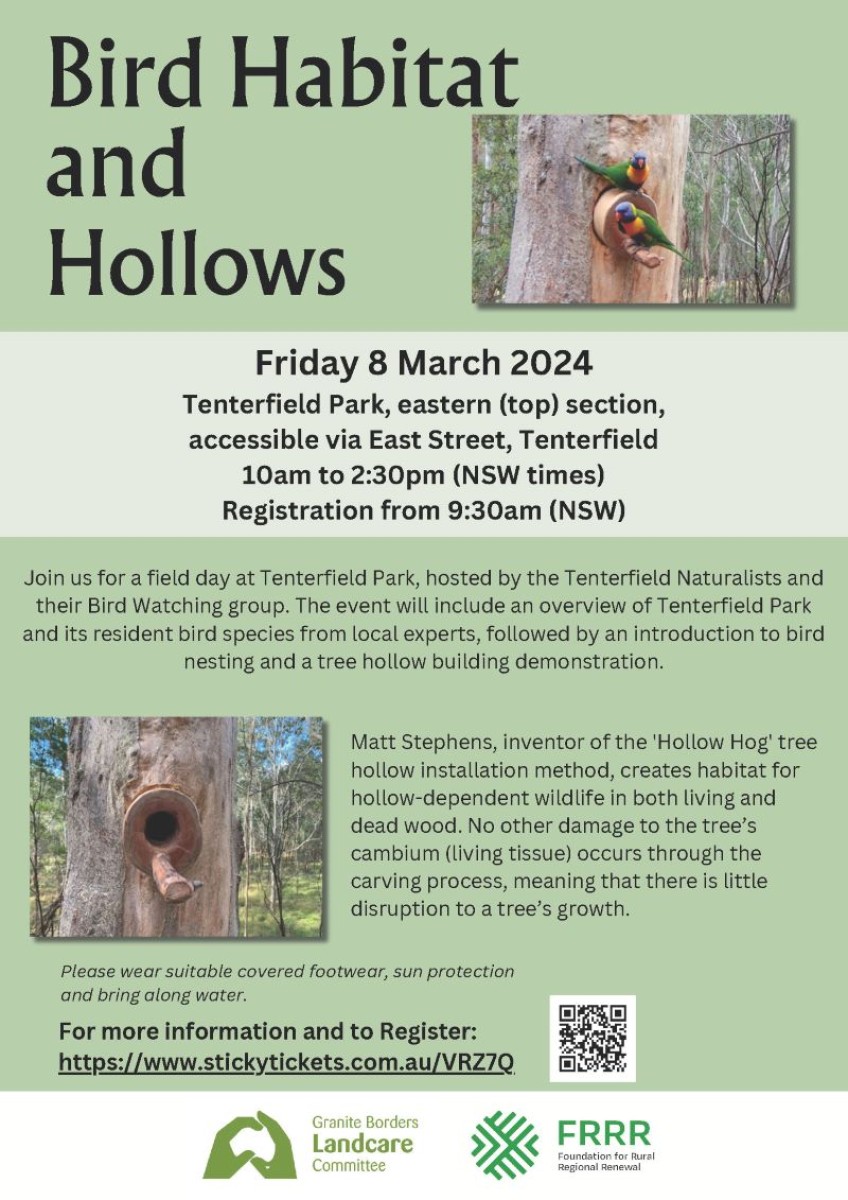Bird Habitat and Hollows
Recent fires have devastated woodlands in and around Tenterfield over the last few years. Many trees and hollows have been lost, reducing habitat available to native fauna for breeding and shelter. This loss of tree hollows throughout the landscape is well documented here in the Granite Border country specifically, in Australia generally, and in many other parts of the world. Hollows provide homes for at least 300 types of Australian animals including 17% of bird species, 42% of mammals and 28% of reptiles. Worldwide more than 1000 species are known to depend on hollows for nesting and roosting.
Join us for a field day at Tenterfield Park, hosted by the Tenterfield Naturalists and their Bird Watching group. The event will include an overview of Tenterfield Park and its resident bird species from local experts, followed by an introduction to bird nesting and a tree hollow building demonstration. Matt Stephens, inventor of the 'Hollow Hog' tree hollow installation method, creates habitat for hollow-dependent wildlife in both living and dead wood. No other damage to the tree’s cambium (living tissue) occurs through the carving process, meaning that there is little disruption to a tree’s growth. The entry hole size and shape can be targeted to any bird or animal species through either carving a larger entry hole or adding entry modifiers to reduce the size back down, in case the wrong species takes advantage of it. This Australian designed and manufactured tool has been trialled extensively throughout NSW.
Location: Tenterfield Park, eastern (top) section, accessible via East Street, Tenterfield
Details: Friday, 8th March, 9:30am
Registration for a 10am start (NSW times).
Please wear suitable covered footwear, sun protection and bring along water.
Please reserve your space via the Sticky Ticket link https://www.stickytickets.com.au/R3AYW or scan the QR Code.

